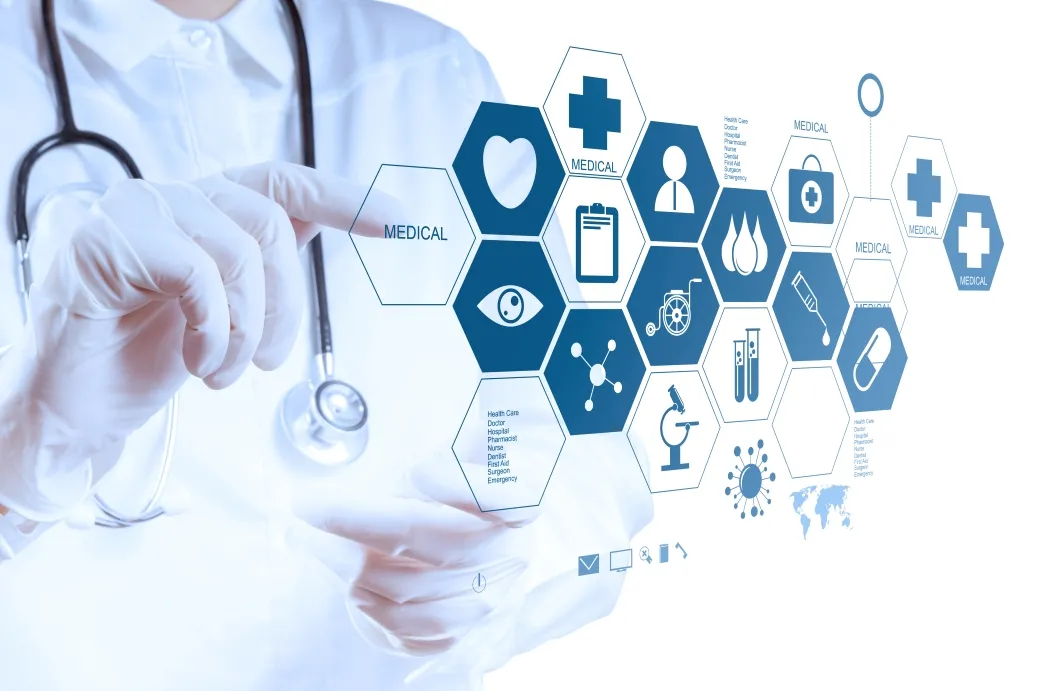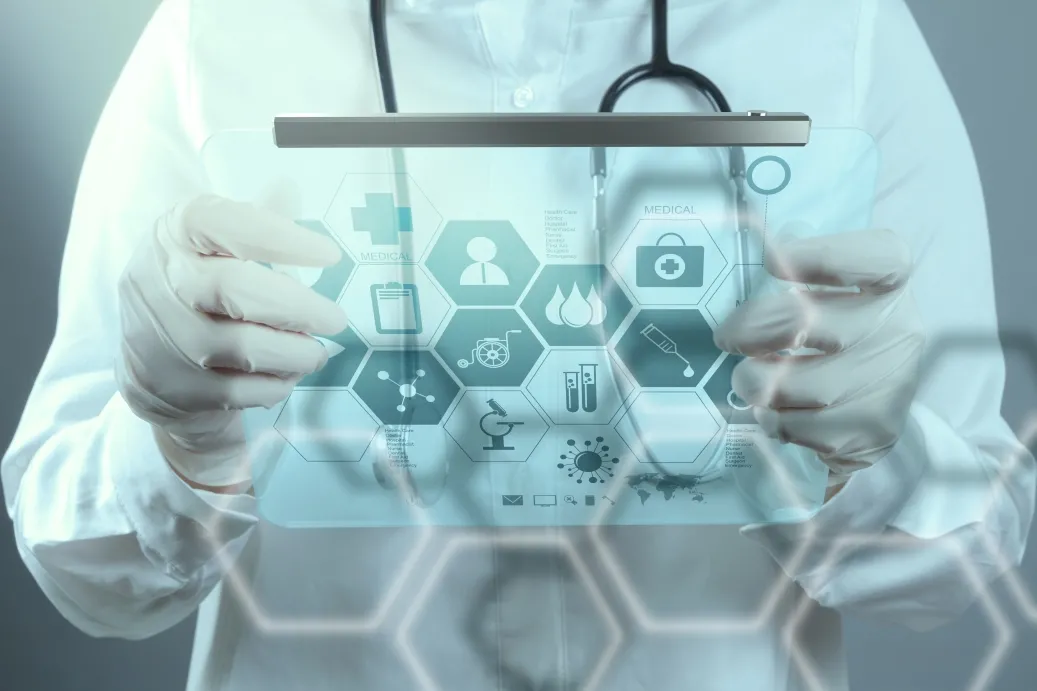Biosimilar Monoclonal Antibodies Market 2025: Unlocking Affordable Access to Advanced Biologic Therapies
The Biosimilar Monoclonal Antibodies (mAbs) market is rapidly emerging as a transformative force in the global biologics industry. Monoclonal antibodies have become essential treatments for a range of diseases, including cancer, autoimmune disorders, and chronic inflammatory conditions. However, the high costs associated with original biologic drugs have limited patient access and strained healthcare budgets worldwide. Biosimilar mAbs—biologically similar but more cost-effective alternatives—are set to address these challenges. As we approach 2025, the market is marked by technological innovation, regulatory evolution, and expanding adoption across various regions, all of which contribute to reshaping the future of biologic therapies.
Key Market Drivers
The biosimilar monoclonal antibodies market is propelled by several critical factors:
- Patent Expiry of Biologics: The expiration of patents on blockbuster monoclonal antibodies has paved the way for biosimilar development. This is increasing competition, reducing costs, and expanding treatment options.
- Rising Prevalence of Chronic Diseases: Increasing incidences of cancer, rheumatoid arthritis, and other autoimmune diseases globally are driving demand for effective monoclonal antibody therapies, creating a large patient pool for biosimilars.
- Healthcare Cost Containment Efforts: Governments and payers worldwide are focusing on reducing healthcare expenditure. Biosimilars offer a cost-efficient alternative without compromising clinical efficacy, making them attractive for reimbursement policies.
- Growing Physician and Patient Acceptance: Enhanced education and evidence supporting biosimilar safety and efficacy are reducing skepticism and encouraging wider prescription and use.
- Streamlined Regulatory Pathways: Regulatory agencies have established clearer, science-based guidelines for biosimilar approval, facilitating faster market entry and boosting manufacturer confidence.
Innovations Shaping the Market
Innovation in the biosimilar mAbs market centers on manufacturing efficiencies, advanced analytics, and patient-centric product enhancements:
- Advanced Biomanufacturing Technologies: Improvements in cell culture, purification, and quality control processes enable manufacturers to produce biosimilars at lower costs while maintaining high purity and consistency.
- Precision Analytical Tools: State-of-the-art characterization techniques ensure biosimilar candidates closely match originator molecules in structure and function, accelerating regulatory approval.
- Enhanced Delivery Systems: Development of prefilled syringes, autoinjectors, and subcutaneous formulations improve patient convenience and adherence compared to traditional intravenous infusions.
- Digital Health Integration: Emerging platforms enable remote monitoring, adherence tracking, and data sharing, complementing biosimilar therapies and supporting personalized disease management.
- Expansion into New Indications: The biosimilar pipeline is growing to target additional therapeutic areas, reflecting the evolving needs of patients and clinicians.
Regional Market Insights
Regional variations in regulatory frameworks, healthcare infrastructure, and market maturity shape the biosimilar monoclonal antibodies landscape:
- North America: The United States and Canada are significant markets with advanced healthcare systems and considerable biologic drug use. However, patent litigation and complex reimbursement environments slow biosimilar uptake despite high demand.
- Europe: Europe leads in biosimilar adoption due to harmonized regulatory pathways and strong policy incentives promoting biosimilar use. Countries such as Germany, the UK, and France are key contributors to market growth.
- Asia-Pacific: Rapidly expanding healthcare infrastructure, rising chronic disease prevalence, and cost sensitivity drive significant growth in Asia-Pacific. China, India, and Japan are key markets investing in biosimilar R&D and manufacturing.
- Latin America, Middle East & Africa: These emerging markets show growing interest in biosimilars amid efforts to modernize healthcare and improve access. Challenges remain in regulatory consistency and infrastructure but are gradually being addressed.
Strategic Considerations for Market Players
To thrive in the competitive biosimilar monoclonal antibodies market, companies should consider:
- Building Strong Clinical Evidence: Robust analytical and clinical data demonstrating biosimilarity and safety are essential to gain regulatory approvals and build trust among healthcare providers.
- Navigating Regulatory Complexity: Tailoring development and submission strategies to meet region-specific regulatory requirements accelerates approvals and market access.
- Engaging Stakeholders: Collaboration with physicians, payers, and patient advocacy groups helps drive biosimilar awareness, acceptance, and adoption.
- Competitive and Sustainable Pricing: Pricing strategies should balance affordability with sustainable manufacturing investments to maintain long-term market presence.
- Innovative Patient Support Programs: Offering educational resources and adherence tools enhances patient outcomes and loyalty.
- Leveraging Digital Health: Integrating biosimilars with digital monitoring platforms can improve treatment adherence and disease management, differentiating offerings in the market.
Conclusion
The biosimilar monoclonal antibodies market in 2025 is set to play a pivotal role in transforming biologic therapies by making advanced treatments more affordable and accessible worldwide. Patent expirations, increasing chronic disease prevalence, and healthcare cost pressures are accelerating biosimilar adoption. Technological innovations and evolving regulatory landscapes support rapid market expansion across diverse regions. Success in this competitive environment hinges on scientific rigor, strategic stakeholder engagement, and patient-centered innovation. As biosimilar monoclonal antibodies gain prominence, they will continue to enhance healthcare outcomes, delivering high-quality therapies that bridge the gap between innovation and affordability.
NOTE:
Quants and Trends is proud to offer an extensive portfolio of meticulously researched healthcare market reports, numbering in the thousands. We also provide tailored customization services to ensure our insights align precisely with your strategic objectives and informational needs. For personalized assistance or to discuss your specific requirements, we invite you to get in touch with our team. We also encourage you to request a complimentary sample PDF report. Please visit our Sample Request Page to receive yours today.
Key Market Players
Celltrion
Pfizer (Hospira)
3SBIO
Novartis (Sandoz)
Dr Reddy’s
Celgen Biopharma
Cadila Healthcare
Hisun Pharma
Torrent Pharmaceuticals
Segmentation By Type
Infliximab
Rituximab
Trastuzumab
Adalimumab
Other
Segmentation By Application
Oncology
Autoimmune Disease
Other
Segmentation By Region
North America (United States, Canada and Mexico)
Europe (Germany, France, United Kingdom, Russia, Italy, and Rest of Europe)
Asia-Pacific (China, Japan, Korea, India, Southeast Asia, and Australia)
South America (Brazil, Argentina, Colombia, and Rest of South America)
Middle East & Africa (Saudi Arabia, UAE, Egypt, South Africa, and Rest of Middle East & Africa)
Market SWOT Analysis
What are the strengths of the Biosimilar Monoclonal Antibodies Market in 2025?
The biosimilar monoclonal antibodies market in 2025 benefits from cost-effectiveness, as biosimilars are typically priced lower than originator biologics, making treatments more accessible. Increasing healthcare expenditure and a growing demand for biologics, along with advancements in biotechnology, further strengthen the market.
What are the weaknesses associated with this market?
One key challenge is the complex regulatory approval process, which can delay the introduction of biosimilars. Additionally, there may be concerns regarding the safety and efficacy of biosimilars, which could hinder physician adoption despite the cost benefits.
What are the opportunities available in this market?
There is a significant opportunity in expanding access to biologics in emerging markets, where the demand for affordable treatment options is growing. Further research and development in biosimilar manufacturing technologies, along with the patent expiry of more originator monoclonal antibodies, will open new market avenues.
What are the threats to the market?
Intense competition from both branded biologics and other biosimilar manufacturers poses a significant threat to market growth. Intellectual property disputes and the potential for market entry barriers due to strict regulatory requirements can also limit the pace of expansion in the market.
Market PESTEL Analysis
What are the political factors affecting the Biosimilar Monoclonal Antibodies Market in 2025?
Government policies related to healthcare reimbursement, patent laws, and regulations for biosimilar approval play a significant role. Political stability and favorable regulatory frameworks in key markets, such as the U.S. and Europe, can drive market growth.
What economic factors influence this market?
The overall economic environment impacts healthcare budgets, particularly in emerging markets, where the demand for affordable biologics is growing. The cost-saving potential of biosimilars is driving economic growth within healthcare systems that face financial pressures from expensive biologic treatments.
What social factors are important for the Biosimilar Monoclonal Antibodies Market?
Rising patient awareness and acceptance of biosimilars are key social drivers. Public demand for more affordable and accessible biologic treatments, along with a shift towards preventative care, is reshaping healthcare treatment paradigms.
What technological factors affect the market?
Advancements in biotechnology, particularly in the production and manufacturing of biosimilars, are enabling the market to grow. Improved analytical techniques for ensuring biosimilar quality and reducing production costs will support the expansion of this market.
What environmental factors are relevant?
Environmental sustainability in drug manufacturing, such as reducing waste and energy consumption, is becoming increasingly important. Regulations related to the environmental impact of pharmaceutical manufacturing will affect the industry’s operational efficiency.
What legal factors influence the Biosimilar Monoclonal Antibodies Market?
Intellectual property laws, including patent expirations and litigation, impact the entry of biosimilars into the market. The legal frameworks for regulatory approvals and pricing regulations also shape the overall growth trajectory of biosimilars in the healthcare system.
Market SIPOC Analysis
Who are the suppliers in the Biosimilar Monoclonal Antibodies Market in 2025?
Suppliers include biotechnology companies, raw material providers (such as cell culture media and biologic components), and contract manufacturing organizations (CMOs) that produce the biosimilar monoclonal antibodies.
What inputs are necessary for the market?
Inputs include advanced biotechnology platforms, manufacturing technologies, high-quality cell lines for production, raw materials, regulatory approvals, and skilled workforce for research and development.
Who are the process owners in the market?
The process owners are biotechnology companies that develop and manufacture biosimilars, regulatory bodies that oversee approvals, and healthcare providers responsible for administering these treatments to patients.
What are the outputs of the market?
The primary outputs are biosimilar monoclonal antibodies, which are then marketed, distributed, and sold to hospitals, clinics, and pharmacies for use in treating a range of diseases, such as cancer, autoimmune conditions, and other chronic illnesses.
Who are the customers of the Biosimilar Monoclonal Antibodies Market?
Customers include healthcare providers, hospitals, clinics, pharmacies, and patients who need affordable biologic treatments, as well as insurance companies that reimburse for such therapies under healthcare policies.
Market Porter's Five Forces
What is the threat of new entrants in the Biosimilar Monoclonal Antibodies Market in 2025?
The threat of new entrants is moderate. While the biosimilar market is growing, high barriers to entry such as the significant capital investment required for R&D, manufacturing, and regulatory approvals limit the ability of new players to easily enter the market.
What is the bargaining power of suppliers in this market?
The bargaining power of suppliers is moderate. While there are a variety of suppliers for raw materials and manufacturing services, the high quality standards required for biosimilar production can give some suppliers more power, especially those providing critical biotechnological components.
What is the bargaining power of buyers in the Biosimilar Monoclonal Antibodies Market?
The bargaining power of buyers is high. Healthcare providers and insurers are focused on reducing costs, and since biosimilars offer lower-cost alternatives to original biologics, buyers can exert pressure on manufacturers for competitive pricing.
What is the threat of substitute products or services?
The threat of substitutes is moderate. Although there are alternative biologic treatments, the increasing acceptance and affordability of biosimilars provide a compelling reason for healthcare providers and patients to opt for these products instead of expensive branded biologics.
What is the intensity of competitive rivalry in the market?
The intensity of competitive rivalry is high. The biosimilar monoclonal antibodies market has many established players, and as more patents for original biologics expire, competition will continue to grow. Manufacturers need to differentiate through pricing, product quality, and regulatory compliance to stay competitive.
Market Upstream Analysis
What are the key upstream activities in the Biosimilar Monoclonal Antibodies Market?
Upstream activities include the discovery and development of biosimilar monoclonal antibodies, sourcing of raw materials (such as cell culture media, biologic components, and cell lines), and research in biotechnology to ensure the creation of high-quality, cost-effective products.
What is the role of suppliers in the upstream process?
Suppliers provide critical raw materials, cell lines, and bioprocessing technologies necessary for the production of biosimilars. These suppliers must meet strict regulatory and quality control standards to ensure the final product's efficacy and safety.
What are the challenges faced by upstream players in this market?
Upstream players face challenges such as the high cost of research and development, complex regulatory requirements for biosimilar approval, and the need for specialized technologies and expertise to produce high-quality biologics that meet market expectations.
How does the upstream supply chain affect the Biosimilar Monoclonal Antibodies Market?
The efficiency and reliability of the upstream supply chain impact production timelines and costs. Delays or issues with raw material availability can result in increased production costs and delays in getting products to market, affecting overall market growth.
Market Midstream Analysis
What are the key midstream activities in the Biosimilar Monoclonal Antibodies Market?
Midstream activities focus on the manufacturing, quality control, and regulatory compliance processes. This includes large-scale production of biosimilars, ensuring that the products meet all regulatory requirements, and maintaining high standards of quality assurance throughout the manufacturing process.
How do manufacturers play a role in the midstream process?
Manufacturers are responsible for scaling up production, ensuring the biosimilars meet the required specifications, and navigating the regulatory approval process. They also manage supply chains, ensuring the timely delivery of biosimilars to the market.
What are the challenges faced in the midstream process?
Challenges in the midstream process include the complexity of scaling up production, maintaining consistent product quality, adhering to stringent regulatory standards, and the high costs associated with large-scale manufacturing.
How does the midstream supply chain impact the Biosimilar Monoclonal Antibodies Market?
The midstream supply chain is crucial for ensuring the timely availability and affordability of biosimilars in the market. Delays or inefficiencies in production or regulatory approvals can hinder the market's growth and the ability to meet the increasing demand for biosimilar treatments.
Market Downstream Analysis
What are the key downstream activities in the Biosimilar Monoclonal Antibodies Market?
Downstream activities involve distribution, marketing, and post-market surveillance of biosimilars. This includes reaching healthcare providers, managing sales channels, conducting promotional activities, and ensuring the ongoing safety and efficacy of the products through monitoring and feedback.
How do distributors and healthcare providers impact the downstream process?
Distributors ensure the timely delivery of biosimilars to pharmacies, hospitals, and clinics, while healthcare providers play a critical role in prescribing biosimilars to patients. They also influence the adoption rate based on their experience, education, and trust in biosimilars.
What are the challenges faced in the downstream process?
Challenges include market access hurdles, slow adoption by healthcare providers, reimbursement issues, and the need for patient education on the safety and effectiveness of biosimilars compared to branded biologics.
How does the downstream supply chain affect the Biosimilar Monoclonal Antibodies Market?
The downstream supply chain is essential for ensuring that biosimilars reach end-users efficiently. Disruptions in distribution or delays in marketing can slow market penetration and limit the overall success of biosimilars, despite their cost advantages.
Chapter 1, to describe Biosimilar Monoclonal Antibodies product scope, market overview, market estimation caveats and base year.
Chapter 2, to profile the top manufacturers of Biosimilar Monoclonal Antibodies, with price, sales, revenue and global market share of Biosimilar Monoclonal Antibodies from 2018 to 2023.
Chapter 3, the Biosimilar Monoclonal Antibodies competitive situation, sales quantity, revenue and global market share of top manufacturers are analyzed emphatically by landscape contrast.
Chapter 4, the Biosimilar Monoclonal Antibodies breakdown data are shown at the regional level, to show the sales quantity, consumption value and growth by regions, from 2018 to 2029.
Chapter 5 and 6, to segment the sales by Type and application, with sales market share and growth rate by type, application, from 2018 to 2029.
Chapter 7, 8, 9, 10 and 11, to break the sales data at the country level, with sales quantity, consumption value and market share for key countries in the world, from 2017 to 2022.and Biosimilar Monoclonal Antibodies market forecast, by regions, type and application, with sales and revenue, from 2024 to 2029.
Chapter 12, market dynamics, drivers, restraints, trends, Porters Five Forces analysis, and Influence of COVID-19 and Russia-Ukraine War.
Chapter 13, the key raw materials and key suppliers, and industry chain of Biosimilar Monoclonal Antibodies.
Chapter 14 and 15, to describe Biosimilar Monoclonal Antibodies sales channel, distributors, customers, research findings and conclusion.
1 Market Overview
1.1 Product Overview and Scope of Biosimilar Monoclonal Antibodies
1.2 Market Estimation Caveats and Base Year
1.3 Market Analysis by Type
1.3.1 Overview: Global Biosimilar Monoclonal Antibodies Consumption Value by Type: 2018 Versus 2022 Versus 2029
1.3.2 Infliximab
1.3.3 Rituximab
1.3.4 Trastuzumab
1.3.5 Adalimumab
1.3.6 Other
1.4 Market Analysis by Application
1.4.1 Overview: Global Biosimilar Monoclonal Antibodies Consumption Value by Application: 2018 Versus 2022 Versus 2029
1.4.2 Oncology
1.4.3 Autoimmune Disease
1.4.4 Other
1.5 Global Biosimilar Monoclonal Antibodies Market Size & Forecast
1.5.1 Global Biosimilar Monoclonal Antibodies Consumption Value (2018 & 2022 & 2029)
1.5.2 Global Biosimilar Monoclonal Antibodies Sales Quantity (2018-2029)
1.5.3 Global Biosimilar Monoclonal Antibodies Average Price (2018-2029)
2 Manufacturers Profiles
2.1 Celltrion
2.1.1 Celltrion Details
2.1.2 Celltrion Major Business
2.1.3 Celltrion Biosimilar Monoclonal Antibodies Product and Services
2.1.4 Celltrion Biosimilar Monoclonal Antibodies Sales Quantity, Average Price, Revenue, Gross Margin and Market Share (2018-2023)
2.1.5 Celltrion Recent Developments/Updates
2.2 Pfizer (Hospira)
2.2.1 Pfizer (Hospira) Details
2.2.2 Pfizer (Hospira) Major Business
2.2.3 Pfizer (Hospira) Biosimilar Monoclonal Antibodies Product and Services
2.2.4 Pfizer (Hospira) Biosimilar Monoclonal Antibodies Sales Quantity, Average Price, Revenue, Gross Margin and Market Share (2018-2023)
2.2.5 Pfizer (Hospira) Recent Developments/Updates
2.3 3SBIO
2.3.1 3SBIO Details
2.3.2 3SBIO Major Business
2.3.3 3SBIO Biosimilar Monoclonal Antibodies Product and Services
2.3.4 3SBIO Biosimilar Monoclonal Antibodies Sales Quantity, Average Price, Revenue, Gross Margin and Market Share (2018-2023)
2.3.5 3SBIO Recent Developments/Updates
2.4 Novartis (Sandoz)
2.4.1 Novartis (Sandoz) Details
2.4.2 Novartis (Sandoz) Major Business
2.4.3 Novartis (Sandoz) Biosimilar Monoclonal Antibodies Product and Services
2.4.4 Novartis (Sandoz) Biosimilar Monoclonal Antibodies Sales Quantity, Average Price, Revenue, Gross Margin and Market Share (2018-2023)
2.4.5 Novartis (Sandoz) Recent Developments/Updates
2.5 Dr Reddy’s
2.5.1 Dr Reddy’s Details
2.5.2 Dr Reddy’s Major Business
2.5.3 Dr Reddy’s Biosimilar Monoclonal Antibodies Product and Services
2.5.4 Dr Reddy’s Biosimilar Monoclonal Antibodies Sales Quantity, Average Price, Revenue, Gross Margin and Market Share (2018-2023)
2.5.5 Dr Reddy’s Recent Developments/Updates
2.6 Celgen Biopharma
2.6.1 Celgen Biopharma Details
2.6.2 Celgen Biopharma Major Business
2.6.3 Celgen Biopharma Biosimilar Monoclonal Antibodies Product and Services
2.6.4 Celgen Biopharma Biosimilar Monoclonal Antibodies Sales Quantity, Average Price, Revenue, Gross Margin and Market Share (2018-2023)
2.6.5 Celgen Biopharma Recent Developments/Updates
2.7 Cadila Healthcare
2.7.1 Cadila Healthcare Details
2.7.2 Cadila Healthcare Major Business
2.7.3 Cadila Healthcare Biosimilar Monoclonal Antibodies Product and Services
2.7.4 Cadila Healthcare Biosimilar Monoclonal Antibodies Sales Quantity, Average Price, Revenue, Gross Margin and Market Share (2018-2023)
2.7.5 Cadila Healthcare Recent Developments/Updates
2.8 Hisun Pharma
2.8.1 Hisun Pharma Details
2.8.2 Hisun Pharma Major Business
2.8.3 Hisun Pharma Biosimilar Monoclonal Antibodies Product and Services
2.8.4 Hisun Pharma Biosimilar Monoclonal Antibodies Sales Quantity, Average Price, Revenue, Gross Margin and Market Share (2018-2023)
2.8.5 Hisun Pharma Recent Developments/Updates
2.9 Torrent Pharmaceuticals
2.9.1 Torrent Pharmaceuticals Details
2.9.2 Torrent Pharmaceuticals Major Business
2.9.3 Torrent Pharmaceuticals Biosimilar Monoclonal Antibodies Product and Services
2.9.4 Torrent Pharmaceuticals Biosimilar Monoclonal Antibodies Sales Quantity, Average Price, Revenue, Gross Margin and Market Share (2018-2023)
2.9.5 Torrent Pharmaceuticals Recent Developments/Updates
3 Competitive Environment: Biosimilar Monoclonal Antibodies by Manufacturer
3.1 Global Biosimilar Monoclonal Antibodies Sales Quantity by Manufacturer (2018-2023)
3.2 Global Biosimilar Monoclonal Antibodies Revenue by Manufacturer (2018-2023)
3.3 Global Biosimilar Monoclonal Antibodies Average Price by Manufacturer (2018-2023)
3.4 Market Share Analysis (2022)
3.4.1 Producer Shipments of Biosimilar Monoclonal Antibodies by Manufacturer Revenue ($MM) and Market Share (%): 2022
3.4.2 Top 3 Biosimilar Monoclonal Antibodies Manufacturer Market Share in 2022
3.4.2 Top 6 Biosimilar Monoclonal Antibodies Manufacturer Market Share in 2022
3.5 Biosimilar Monoclonal Antibodies Market: Overall Company Footprint Analysis
3.5.1 Biosimilar Monoclonal Antibodies Market: Region Footprint
3.5.2 Biosimilar Monoclonal Antibodies Market: Company Product Type Footprint
3.5.3 Biosimilar Monoclonal Antibodies Market: Company Product Application Footprint
3.6 New Market Entrants and Barriers to Market Entry
3.7 Mergers, Acquisition, Agreements, and Collaborations
4 Consumption Analysis by Region
4.1 Global Biosimilar Monoclonal Antibodies Market Size by Region
4.1.1 Global Biosimilar Monoclonal Antibodies Sales Quantity by Region (2018-2029)
4.1.2 Global Biosimilar Monoclonal Antibodies Consumption Value by Region (2018-2029)
4.1.3 Global Biosimilar Monoclonal Antibodies Average Price by Region (2018-2029)
4.2 North America Biosimilar Monoclonal Antibodies Consumption Value (2018-2029)
4.3 Europe Biosimilar Monoclonal Antibodies Consumption Value (2018-2029)
4.4 Asia-Pacific Biosimilar Monoclonal Antibodies Consumption Value (2018-2029)
4.5 South America Biosimilar Monoclonal Antibodies Consumption Value (2018-2029)
4.6 Middle East and Africa Biosimilar Monoclonal Antibodies Consumption Value (2018-2029)
5 Market Segment by Type
5.1 Global Biosimilar Monoclonal Antibodies Sales Quantity by Type (2018-2029)
5.2 Global Biosimilar Monoclonal Antibodies Consumption Value by Type (2018-2029)
5.3 Global Biosimilar Monoclonal Antibodies Average Price by Type (2018-2029)
6 Market Segment by Application
6.1 Global Biosimilar Monoclonal Antibodies Sales Quantity by Application (2018-2029)
6.2 Global Biosimilar Monoclonal Antibodies Consumption Value by Application (2018-2029)
6.3 Global Biosimilar Monoclonal Antibodies Average Price by Application (2018-2029)
7 North America
7.1 North America Biosimilar Monoclonal Antibodies Sales Quantity by Type (2018-2029)
7.2 North America Biosimilar Monoclonal Antibodies Sales Quantity by Application (2018-2029)
7.3 North America Biosimilar Monoclonal Antibodies Market Size by Country
7.3.1 North America Biosimilar Monoclonal Antibodies Sales Quantity by Country (2018-2029)
7.3.2 North America Biosimilar Monoclonal Antibodies Consumption Value by Country (2018-2029)
7.3.3 United States Market Size and Forecast (2018-2029)
7.3.4 Canada Market Size and Forecast (2018-2029)
7.3.5 Mexico Market Size and Forecast (2018-2029)
8 Europe
8.1 Europe Biosimilar Monoclonal Antibodies Sales Quantity by Type (2018-2029)
8.2 Europe Biosimilar Monoclonal Antibodies Sales Quantity by Application (2018-2029)
8.3 Europe Biosimilar Monoclonal Antibodies Market Size by Country
8.3.1 Europe Biosimilar Monoclonal Antibodies Sales Quantity by Country (2018-2029)
8.3.2 Europe Biosimilar Monoclonal Antibodies Consumption Value by Country (2018-2029)
8.3.3 Germany Market Size and Forecast (2018-2029)
8.3.4 France Market Size and Forecast (2018-2029)
8.3.5 United Kingdom Market Size and Forecast (2018-2029)
8.3.6 Russia Market Size and Forecast (2018-2029)
8.3.7 Italy Market Size and Forecast (2018-2029)
9 Asia-Pacific
9.1 Asia-Pacific Biosimilar Monoclonal Antibodies Sales Quantity by Type (2018-2029)
9.2 Asia-Pacific Biosimilar Monoclonal Antibodies Sales Quantity by Application (2018-2029)
9.3 Asia-Pacific Biosimilar Monoclonal Antibodies Market Size by Region
9.3.1 Asia-Pacific Biosimilar Monoclonal Antibodies Sales Quantity by Region (2018-2029)
9.3.2 Asia-Pacific Biosimilar Monoclonal Antibodies Consumption Value by Region (2018-2029)
9.3.3 China Market Size and Forecast (2018-2029)
9.3.4 Japan Market Size and Forecast (2018-2029)
9.3.5 Korea Market Size and Forecast (2018-2029)
9.3.6 India Market Size and Forecast (2018-2029)
9.3.7 Southeast Asia Market Size and Forecast (2018-2029)
9.3.8 Australia Market Size and Forecast (2018-2029)
10 South America
10.1 South America Biosimilar Monoclonal Antibodies Sales Quantity by Type (2018-2029)
10.2 South America Biosimilar Monoclonal Antibodies Sales Quantity by Application (2018-2029)
10.3 South America Biosimilar Monoclonal Antibodies Market Size by Country
10.3.1 South America Biosimilar Monoclonal Antibodies Sales Quantity by Country (2018-2029)
10.3.2 South America Biosimilar Monoclonal Antibodies Consumption Value by Country (2018-2029)
10.3.3 Brazil Market Size and Forecast (2018-2029)
10.3.4 Argentina Market Size and Forecast (2018-2029)
11 Middle East & Africa
11.1 Middle East & Africa Biosimilar Monoclonal Antibodies Sales Quantity by Type (2018-2029)
11.2 Middle East & Africa Biosimilar Monoclonal Antibodies Sales Quantity by Application (2018-2029)
11.3 Middle East & Africa Biosimilar Monoclonal Antibodies Market Size by Country
11.3.1 Middle East & Africa Biosimilar Monoclonal Antibodies Sales Quantity by Country (2018-2029)
11.3.2 Middle East & Africa Biosimilar Monoclonal Antibodies Consumption Value by Country (2018-2029)
11.3.3 Turkey Market Size and Forecast (2018-2029)
11.3.4 Egypt Market Size and Forecast (2018-2029)
11.3.5 Saudi Arabia Market Size and Forecast (2018-2029)
11.3.6 South Africa Market Size and Forecast (2018-2029)
12 Market Dynamics
12.1 Biosimilar Monoclonal Antibodies Market Drivers
12.2 Biosimilar Monoclonal Antibodies Market Restraints
12.3 Biosimilar Monoclonal Antibodies Trends Analysis
12.4 Porters Five Forces Analysis
12.4.1 Threat of New Entrants
12.4.2 Bargaining Power of Suppliers
12.4.3 Bargaining Power of Buyers
12.4.4 Threat of Substitutes
12.4.5 Competitive Rivalry
12.5 Influence of COVID-19 and Russia-Ukraine War
12.5.1 Influence of COVID-19
12.5.2 Influence of Russia-Ukraine War
13 Raw Material and Industry Chain
13.1 Raw Material of Biosimilar Monoclonal Antibodies and Key Manufacturers
13.2 Manufacturing Costs Percentage of Biosimilar Monoclonal Antibodies
13.3 Biosimilar Monoclonal Antibodies Production Process
13.4 Biosimilar Monoclonal Antibodies Industrial Chain
14 Shipments by Distribution Channel
14.1 Sales Channel
14.1.1 Direct to End-User
14.1.2 Distributors
14.2 Biosimilar Monoclonal Antibodies Typical Distributors
14.3 Biosimilar Monoclonal Antibodies Typical Customers
15 Research Findings and Conclusion
16 Appendix
16.1 Methodology
16.2 Research Process and Data Source
16.3 Disclaimer
List of Tables
Table 1. Global Biosimilar Monoclonal Antibodies Consumption Value by Type, (USD Million), 2018 & 2022 & 2029
Table 2. Global Biosimilar Monoclonal Antibodies Consumption Value by Application, (USD Million), 2018 & 2022 & 2029
Table 3. Celltrion Basic Information, Manufacturing Base and Competitors
Table 4. Celltrion Major Business
Table 5. Celltrion Biosimilar Monoclonal Antibodies Product and Services
Table 6. Celltrion Biosimilar Monoclonal Antibodies Sales Quantity (K Units), Average Price (USD/Unit), Revenue (USD Million), Gross Margin and Market Share (2018-2023)
Table 7. Celltrion Recent Developments/Updates
Table 8. Pfizer (Hospira) Basic Information, Manufacturing Base and Competitors
Table 9. Pfizer (Hospira) Major Business
Table 10. Pfizer (Hospira) Biosimilar Monoclonal Antibodies Product and Services
Table 11. Pfizer (Hospira) Biosimilar Monoclonal Antibodies Sales Quantity (K Units), Average Price (USD/Unit), Revenue (USD Million), Gross Margin and Market Share (2018-2023)
Table 12. Pfizer (Hospira) Recent Developments/Updates
Table 13. 3SBIO Basic Information, Manufacturing Base and Competitors
Table 14. 3SBIO Major Business
Table 15. 3SBIO Biosimilar Monoclonal Antibodies Product and Services
Table 16. 3SBIO Biosimilar Monoclonal Antibodies Sales Quantity (K Units), Average Price (USD/Unit), Revenue (USD Million), Gross Margin and Market Share (2018-2023)
Table 17. 3SBIO Recent Developments/Updates
Table 18. Novartis (Sandoz) Basic Information, Manufacturing Base and Competitors
Table 19. Novartis (Sandoz) Major Business
Table 20. Novartis (Sandoz) Biosimilar Monoclonal Antibodies Product and Services
Table 21. Novartis (Sandoz) Biosimilar Monoclonal Antibodies Sales Quantity (K Units), Average Price (USD/Unit), Revenue (USD Million), Gross Margin and Market Share (2018-2023)
Table 22. Novartis (Sandoz) Recent Developments/Updates
Table 23. Dr Reddy’s Basic Information, Manufacturing Base and Competitors
Table 24. Dr Reddy’s Major Business
Table 25. Dr Reddy’s Biosimilar Monoclonal Antibodies Product and Services
Table 26. Dr Reddy’s Biosimilar Monoclonal Antibodies Sales Quantity (K Units), Average Price (USD/Unit), Revenue (USD Million), Gross Margin and Market Share (2018-2023)
Table 27. Dr Reddy’s Recent Developments/Updates
Table 28. Celgen Biopharma Basic Information, Manufacturing Base and Competitors
Table 29. Celgen Biopharma Major Business
Table 30. Celgen Biopharma Biosimilar Monoclonal Antibodies Product and Services
Table 31. Celgen Biopharma Biosimilar Monoclonal Antibodies Sales Quantity (K Units), Average Price (USD/Unit), Revenue (USD Million), Gross Margin and Market Share (2018-2023)
Table 32. Celgen Biopharma Recent Developments/Updates
Table 33. Cadila Healthcare Basic Information, Manufacturing Base and Competitors
Table 34. Cadila Healthcare Major Business
Table 35. Cadila Healthcare Biosimilar Monoclonal Antibodies Product and Services
Table 36. Cadila Healthcare Biosimilar Monoclonal Antibodies Sales Quantity (K Units), Average Price (USD/Unit), Revenue (USD Million), Gross Margin and Market Share (2018-2023)
Table 37. Cadila Healthcare Recent Developments/Updates
Table 38. Hisun Pharma Basic Information, Manufacturing Base and Competitors
Table 39. Hisun Pharma Major Business
Table 40. Hisun Pharma Biosimilar Monoclonal Antibodies Product and Services
Table 41. Hisun Pharma Biosimilar Monoclonal Antibodies Sales Quantity (K Units), Average Price (USD/Unit), Revenue (USD Million), Gross Margin and Market Share (2018-2023)
Table 42. Hisun Pharma Recent Developments/Updates
Table 43. Torrent Pharmaceuticals Basic Information, Manufacturing Base and Competitors
Table 44. Torrent Pharmaceuticals Major Business
Table 45. Torrent Pharmaceuticals Biosimilar Monoclonal Antibodies Product and Services
Table 46. Torrent Pharmaceuticals Biosimilar Monoclonal Antibodies Sales Quantity (K Units), Average Price (USD/Unit), Revenue (USD Million), Gross Margin and Market Share (2018-2023)
Table 47. Torrent Pharmaceuticals Recent Developments/Updates
Table 48. Global Biosimilar Monoclonal Antibodies Sales Quantity by Manufacturer (2018-2023) & (K Units)
Table 49. Global Biosimilar Monoclonal Antibodies Revenue by Manufacturer (2018-2023) & (USD Million)
Table 50. Global Biosimilar Monoclonal Antibodies Average Price by Manufacturer (2018-2023) & (USD/Unit)
Table 51. Market Position of Manufacturers in Biosimilar Monoclonal Antibodies, (Tier 1, Tier 2, and Tier 3), Based on Consumption Value in 2022
Table 52. Head Office and Biosimilar Monoclonal Antibodies Production Site of Key Manufacturer
Table 53. Biosimilar Monoclonal Antibodies Market: Company Product Type Footprint
Table 54. Biosimilar Monoclonal Antibodies Market: Company Product Application Footprint
Table 55. Biosimilar Monoclonal Antibodies New Market Entrants and Barriers to Market Entry
Table 56. Biosimilar Monoclonal Antibodies Mergers, Acquisition, Agreements, and Collaborations
Table 57. Global Biosimilar Monoclonal Antibodies Sales Quantity by Region (2018-2023) & (K Units)
Table 58. Global Biosimilar Monoclonal Antibodies Sales Quantity by Region (2024-2029) & (K Units)
Table 59. Global Biosimilar Monoclonal Antibodies Consumption Value by Region (2018-2023) & (USD Million)
Table 60. Global Biosimilar Monoclonal Antibodies Consumption Value by Region (2024-2029) & (USD Million)
Table 61. Global Biosimilar Monoclonal Antibodies Average Price by Region (2018-2023) & (USD/Unit)
Table 62. Global Biosimilar Monoclonal Antibodies Average Price by Region (2024-2029) & (USD/Unit)
Table 63. Global Biosimilar Monoclonal Antibodies Sales Quantity by Type (2018-2023) & (K Units)
Table 64. Global Biosimilar Monoclonal Antibodies Sales Quantity by Type (2024-2029) & (K Units)
Table 65. Global Biosimilar Monoclonal Antibodies Consumption Value by Type (2018-2023) & (USD Million)
Table 66. Global Biosimilar Monoclonal Antibodies Consumption Value by Type (2024-2029) & (USD Million)
Table 67. Global Biosimilar Monoclonal Antibodies Average Price by Type (2018-2023) & (USD/Unit)
Table 68. Global Biosimilar Monoclonal Antibodies Average Price by Type (2024-2029) & (USD/Unit)
Table 69. Global Biosimilar Monoclonal Antibodies Sales Quantity by Application (2018-2023) & (K Units)
Table 70. Global Biosimilar Monoclonal Antibodies Sales Quantity by Application (2024-2029) & (K Units)
Table 71. Global Biosimilar Monoclonal Antibodies Consumption Value by Application (2018-2023) & (USD Million)
Table 72. Global Biosimilar Monoclonal Antibodies Consumption Value by Application (2024-2029) & (USD Million)
Table 73. Global Biosimilar Monoclonal Antibodies Average Price by Application (2018-2023) & (USD/Unit)
Table 74. Global Biosimilar Monoclonal Antibodies Average Price by Application (2024-2029) & (USD/Unit)
Table 75. North America Biosimilar Monoclonal Antibodies Sales Quantity by Type (2018-2023) & (K Units)
Table 76. North America Biosimilar Monoclonal Antibodies Sales Quantity by Type (2024-2029) & (K Units)
Table 77. North America Biosimilar Monoclonal Antibodies Sales Quantity by Application (2018-2023) & (K Units)
Table 78. North America Biosimilar Monoclonal Antibodies Sales Quantity by Application (2024-2029) & (K Units)
Table 79. North America Biosimilar Monoclonal Antibodies Sales Quantity by Country (2018-2023) & (K Units)
Table 80. North America Biosimilar Monoclonal Antibodies Sales Quantity by Country (2024-2029) & (K Units)
Table 81. North America Biosimilar Monoclonal Antibodies Consumption Value by Country (2018-2023) & (USD Million)
Table 82. North America Biosimilar Monoclonal Antibodies Consumption Value by Country (2024-2029) & (USD Million)
Table 83. Europe Biosimilar Monoclonal Antibodies Sales Quantity by Type (2018-2023) & (K Units)
Table 84. Europe Biosimilar Monoclonal Antibodies Sales Quantity by Type (2024-2029) & (K Units)
Table 85. Europe Biosimilar Monoclonal Antibodies Sales Quantity by Application (2018-2023) & (K Units)
Table 86. Europe Biosimilar Monoclonal Antibodies Sales Quantity by Application (2024-2029) & (K Units)
Table 87. Europe Biosimilar Monoclonal Antibodies Sales Quantity by Country (2018-2023) & (K Units)
Table 88. Europe Biosimilar Monoclonal Antibodies Sales Quantity by Country (2024-2029) & (K Units)
Table 89. Europe Biosimilar Monoclonal Antibodies Consumption Value by Country (2018-2023) & (USD Million)
Table 90. Europe Biosimilar Monoclonal Antibodies Consumption Value by Country (2024-2029) & (USD Million)
Table 91. Asia-Pacific Biosimilar Monoclonal Antibodies Sales Quantity by Type (2018-2023) & (K Units)
Table 92. Asia-Pacific Biosimilar Monoclonal Antibodies Sales Quantity by Type (2024-2029) & (K Units)
Table 93. Asia-Pacific Biosimilar Monoclonal Antibodies Sales Quantity by Application (2018-2023) & (K Units)
Table 94. Asia-Pacific Biosimilar Monoclonal Antibodies Sales Quantity by Application (2024-2029) & (K Units)
Table 95. Asia-Pacific Biosimilar Monoclonal Antibodies Sales Quantity by Region (2018-2023) & (K Units)
Table 96. Asia-Pacific Biosimilar Monoclonal Antibodies Sales Quantity by Region (2024-2029) & (K Units)
Table 97. Asia-Pacific Biosimilar Monoclonal Antibodies Consumption Value by Region (2018-2023) & (USD Million)
Table 98. Asia-Pacific Biosimilar Monoclonal Antibodies Consumption Value by Region (2024-2029) & (USD Million)
Table 99. South America Biosimilar Monoclonal Antibodies Sales Quantity by Type (2018-2023) & (K Units)
Table 100. South America Biosimilar Monoclonal Antibodies Sales Quantity by Type (2024-2029) & (K Units)
Table 101. South America Biosimilar Monoclonal Antibodies Sales Quantity by Application (2018-2023) & (K Units)
Table 102. South America Biosimilar Monoclonal Antibodies Sales Quantity by Application (2024-2029) & (K Units)
Table 103. South America Biosimilar Monoclonal Antibodies Sales Quantity by Country (2018-2023) & (K Units)
Table 104. South America Biosimilar Monoclonal Antibodies Sales Quantity by Country (2024-2029) & (K Units)
Table 105. South America Biosimilar Monoclonal Antibodies Consumption Value by Country (2018-2023) & (USD Million)
Table 106. South America Biosimilar Monoclonal Antibodies Consumption Value by Country (2024-2029) & (USD Million)
Table 107. Middle East & Africa Biosimilar Monoclonal Antibodies Sales Quantity by Type (2018-2023) & (K Units)
Table 108. Middle East & Africa Biosimilar Monoclonal Antibodies Sales Quantity by Type (2024-2029) & (K Units)
Table 109. Middle East & Africa Biosimilar Monoclonal Antibodies Sales Quantity by Application (2018-2023) & (K Units)
Table 110. Middle East & Africa Biosimilar Monoclonal Antibodies Sales Quantity by Application (2024-2029) & (K Units)
Table 111. Middle East & Africa Biosimilar Monoclonal Antibodies Sales Quantity by Region (2018-2023) & (K Units)
Table 112. Middle East & Africa Biosimilar Monoclonal Antibodies Sales Quantity by Region (2024-2029) & (K Units)
Table 113. Middle East & Africa Biosimilar Monoclonal Antibodies Consumption Value by Region (2018-2023) & (USD Million)
Table 114. Middle East & Africa Biosimilar Monoclonal Antibodies Consumption Value by Region (2024-2029) & (USD Million)
Table 115. Biosimilar Monoclonal Antibodies Raw Material
Table 116. Key Manufacturers of Biosimilar Monoclonal Antibodies Raw Materials
Table 117. Biosimilar Monoclonal Antibodies Typical Distributors
Table 118. Biosimilar Monoclonal Antibodies Typical Customers
List of Figures
Figure 1. Biosimilar Monoclonal Antibodies Picture
Figure 2. Global Biosimilar Monoclonal Antibodies Consumption Value by Type, (USD Million), 2018 & 2022 & 2029
Figure 3. Global Biosimilar Monoclonal Antibodies Consumption Value Market Share by Type in 2022
Figure 4. Infliximab Examples
Figure 5. Rituximab Examples
Figure 6. Trastuzumab Examples
Figure 7. Adalimumab Examples
Figure 8. Other Examples
Figure 9. Global Biosimilar Monoclonal Antibodies Consumption Value by Application, (USD Million), 2018 & 2022 & 2029
Figure 10. Global Biosimilar Monoclonal Antibodies Consumption Value Market Share by Application in 2022
Figure 11. Oncology Examples
Figure 12. Autoimmune Disease Examples
Figure 13. Other Examples
Figure 14. Global Biosimilar Monoclonal Antibodies Consumption Value, (USD Million): 2018 & 2022 & 2029
Figure 15. Global Biosimilar Monoclonal Antibodies Consumption Value and Forecast (2018-2029) & (USD Million)
Figure 16. Global Biosimilar Monoclonal Antibodies Sales Quantity (2018-2029) & (K Units)
Figure 17. Global Biosimilar Monoclonal Antibodies Average Price (2018-2029) & (USD/Unit)
Figure 18. Global Biosimilar Monoclonal Antibodies Sales Quantity Market Share by Manufacturer in 2022
Figure 19. Global Biosimilar Monoclonal Antibodies Consumption Value Market Share by Manufacturer in 2022
Figure 20. Producer Shipments of Biosimilar Monoclonal Antibodies by Manufacturer Sales Quantity ($MM) and Market Share (%): 2021
Figure 21. Top 3 Biosimilar Monoclonal Antibodies Manufacturer (Consumption Value) Market Share in 2022
Figure 22. Top 6 Biosimilar Monoclonal Antibodies Manufacturer (Consumption Value) Market Share in 2022
Figure 23. Global Biosimilar Monoclonal Antibodies Sales Quantity Market Share by Region (2018-2029)
Figure 24. Global Biosimilar Monoclonal Antibodies Consumption Value Market Share by Region (2018-2029)
Figure 25. North America Biosimilar Monoclonal Antibodies Consumption Value (2018-2029) & (USD Million)
Figure 26. Europe Biosimilar Monoclonal Antibodies Consumption Value (2018-2029) & (USD Million)
Figure 27. Asia-Pacific Biosimilar Monoclonal Antibodies Consumption Value (2018-2029) & (USD Million)
Figure 28. South America Biosimilar Monoclonal Antibodies Consumption Value (2018-2029) & (USD Million)
Figure 29. Middle East & Africa Biosimilar Monoclonal Antibodies Consumption Value (2018-2029) & (USD Million)
Figure 30. Global Biosimilar Monoclonal Antibodies Sales Quantity Market Share by Type (2018-2029)
Figure 31. Global Biosimilar Monoclonal Antibodies Consumption Value Market Share by Type (2018-2029)
Figure 32. Global Biosimilar Monoclonal Antibodies Average Price by Type (2018-2029) & (USD/Unit)
Figure 33. Global Biosimilar Monoclonal Antibodies Sales Quantity Market Share by Application (2018-2029)
Figure 34. Global Biosimilar Monoclonal Antibodies Consumption Value Market Share by Application (2018-2029)
Figure 35. Global Biosimilar Monoclonal Antibodies Average Price by Application (2018-2029) & (USD/Unit)
Figure 36. North America Biosimilar Monoclonal Antibodies Sales Quantity Market Share by Type (2018-2029)
Figure 37. North America Biosimilar Monoclonal Antibodies Sales Quantity Market Share by Application (2018-2029)
Figure 38. North America Biosimilar Monoclonal Antibodies Sales Quantity Market Share by Country (2018-2029)
Figure 39. North America Biosimilar Monoclonal Antibodies Consumption Value Market Share by Country (2018-2029)
Figure 40. United States Biosimilar Monoclonal Antibodies Consumption Value and Growth Rate (2018-2029) & (USD Million)
Figure 41. Canada Biosimilar Monoclonal Antibodies Consumption Value and Growth Rate (2018-2029) & (USD Million)
Figure 42. Mexico Biosimilar Monoclonal Antibodies Consumption Value and Growth Rate (2018-2029) & (USD Million)
Figure 43. Europe Biosimilar Monoclonal Antibodies Sales Quantity Market Share by Type (2018-2029)
Figure 44. Europe Biosimilar Monoclonal Antibodies Sales Quantity Market Share by Application (2018-2029)
Figure 45. Europe Biosimilar Monoclonal Antibodies Sales Quantity Market Share by Country (2018-2029)
Figure 46. Europe Biosimilar Monoclonal Antibodies Consumption Value Market Share by Country (2018-2029)
Figure 47. Germany Biosimilar Monoclonal Antibodies Consumption Value and Growth Rate (2018-2029) & (USD Million)
Figure 48. France Biosimilar Monoclonal Antibodies Consumption Value and Growth Rate (2018-2029) & (USD Million)
Figure 49. United Kingdom Biosimilar Monoclonal Antibodies Consumption Value and Growth Rate (2018-2029) & (USD Million)
Figure 50. Russia Biosimilar Monoclonal Antibodies Consumption Value and Growth Rate (2018-2029) & (USD Million)
Figure 51. Italy Biosimilar Monoclonal Antibodies Consumption Value and Growth Rate (2018-2029) & (USD Million)
Figure 52. Asia-Pacific Biosimilar Monoclonal Antibodies Sales Quantity Market Share by Type (2018-2029)
Figure 53. Asia-Pacific Biosimilar Monoclonal Antibodies Sales Quantity Market Share by Application (2018-2029)
Figure 54. Asia-Pacific Biosimilar Monoclonal Antibodies Sales Quantity Market Share by Region (2018-2029)
Figure 55. Asia-Pacific Biosimilar Monoclonal Antibodies Consumption Value Market Share by Region (2018-2029)
Figure 56. China Biosimilar Monoclonal Antibodies Consumption Value and Growth Rate (2018-2029) & (USD Million)
Figure 57. Japan Biosimilar Monoclonal Antibodies Consumption Value and Growth Rate (2018-2029) & (USD Million)
Figure 58. Korea Biosimilar Monoclonal Antibodies Consumption Value and Growth Rate (2018-2029) & (USD Million)
Figure 59. India Biosimilar Monoclonal Antibodies Consumption Value and Growth Rate (2018-2029) & (USD Million)
Figure 60. Southeast Asia Biosimilar Monoclonal Antibodies Consumption Value and Growth Rate (2018-2029) & (USD Million)
Figure 61. Australia Biosimilar Monoclonal Antibodies Consumption Value and Growth Rate (2018-2029) & (USD Million)
Figure 62. South America Biosimilar Monoclonal Antibodies Sales Quantity Market Share by Type (2018-2029)
Figure 63. South America Biosimilar Monoclonal Antibodies Sales Quantity Market Share by Application (2018-2029)
Figure 64. South America Biosimilar Monoclonal Antibodies Sales Quantity Market Share by Country (2018-2029)
Figure 65. South America Biosimilar Monoclonal Antibodies Consumption Value Market Share by Country (2018-2029)
Figure 66. Brazil Biosimilar Monoclonal Antibodies Consumption Value and Growth Rate (2018-2029) & (USD Million)
Figure 67. Argentina Biosimilar Monoclonal Antibodies Consumption Value and Growth Rate (2018-2029) & (USD Million)
Figure 68. Middle East & Africa Biosimilar Monoclonal Antibodies Sales Quantity Market Share by Type (2018-2029)
Figure 69. Middle East & Africa Biosimilar Monoclonal Antibodies Sales Quantity Market Share by Application (2018-2029)
Figure 70. Middle East & Africa Biosimilar Monoclonal Antibodies Sales Quantity Market Share by Region (2018-2029)
Figure 71. Middle East & Africa Biosimilar Monoclonal Antibodies Consumption Value Market Share by Region (2018-2029)
Figure 72. Turkey Biosimilar Monoclonal Antibodies Consumption Value and Growth Rate (2018-2029) & (USD Million)
Figure 73. Egypt Biosimilar Monoclonal Antibodies Consumption Value and Growth Rate (2018-2029) & (USD Million)
Figure 74. Saudi Arabia Biosimilar Monoclonal Antibodies Consumption Value and Growth Rate (2018-2029) & (USD Million)
Figure 75. South Africa Biosimilar Monoclonal Antibodies Consumption Value and Growth Rate (2018-2029) & (USD Million)
Figure 76. Biosimilar Monoclonal Antibodies Market Drivers
Figure 77. Biosimilar Monoclonal Antibodies Market Restraints
Figure 78. Biosimilar Monoclonal Antibodies Market Trends
Figure 79. Porters Five Forces Analysis
Figure 80. Manufacturing Cost Structure Analysis of Biosimilar Monoclonal Antibodies in 2022
Figure 81. Manufacturing Process Analysis of Biosimilar Monoclonal Antibodies
Figure 82. Biosimilar Monoclonal Antibodies Industrial Chain
Figure 83. Sales Quantity Channel: Direct to End-User vs Distributors
Figure 84. Direct Channel Pros & Cons
Figure 85. Indirect Channel Pros & Cons
Figure 86. Methodology
Figure 87. Research Process and Data Source











